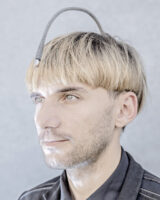Workshop: Intrusive Thoughts
07 May 2022
![singularity merged Image: Sam Lieblich, [Worldwide Neurosis], 2021](https://photo.org.au/api/wp-content/uploads/2022/02/singularity-merged-200x174.png)
Image: Sam Lieblich, Worldwide Neurosis, 2021
Image: Sam Lieblich, Worldwide Neurosis, 2021
When
07 May 2022
Saturday, 3-5pm (AEST)
Venue
Themes
Mortality
Society
Price
Free, applications required
Intrusive thoughts: the internal monologue of a stressed singularity.
A workshop led by Sam Lieblich
This in-person event is FREE and will be held at the gallery.
Application deadline: Midnight, Tuesday May 3, 2022. Places are limited.
Techno-futurists believe “The Singularity”—when human and artificial intelligence combines to form a world-spanning super-intelligence—is the inevitable next step in the evolution of life on Earth; but what happens when the worldwide super-mind starts spiralling? And what if the singularity is already here and it’s literally just obsessing over whether we’ve all bought toilet paper this week?
This workshop will be delivered by the artist in the gallery. Attendees will have the opportunity to engage with the artwork and they will introduced to the thought of John C. Lilley, Ray Kurzweil, and other outsiders and futurists, whom we will read through the work of Jacques Lacan and Sigmund Freud. After establishing a theoretical grounding we will use state-of-the-art machine learning algorithms, and a set of especially adapted writing exercises, to learn to listen—to ourselves and to the algorithm—so that we might predict what comes next. What will it be like when the internet scrolls us? Get ready to see Siri stress the fuck out!
These workshops are free and open to writing and technology enthusiasts.
Participants will contribute to a living AI artwork on display at FUTURES.
Access services including Auslan available on request. Writers of all abilities and from any state or territory are encouraged to apply.
Presented by Free Association and FUTURES as part of PHOTO 2022
View on Map
Artist
Sam Lieblich (AU)
Born 1983, Perth, Australia
Lives and works Melbourne, AustraliaSam Lieblich is a Melbourne-based artist investigating networked and algorithmic forms. His work explores the orientation/disorientation of the subject in the other, and the manifestations of the human-algorithm hybrid into which human beings are now subsumed. These digital works combine machine learning algorithms with custom code to foreground systems design and—by finding beauty and intention in the system—to try to re-situate human desire in the algorithm.
![HERO WEB two mirrors facing each other producing a mise en abyme with a crystal at the centre and two people on either side and the whole thing looks like an emblem - Sam Lieblich and PHRASER 2021 Image: Sam Lieblich, [PHRASER: Intrusive Thoughts] (digital output), 2021. Courtesy the artist and FUTURES.](https://photo.org.au/api/wp-content/uploads/2022/02/HERO-WEB-two-mirrors-facing-each-other-producing-a-mise-en-abyme-with-a-crystal-at-the-centre-and-two-people-on-either-side-and-the-whole-thing-looks-like-an-emblem-Sam-Lieblich-and-PHRASER-2021-200x200.jpg)
![Sam_Lieblich_intrusive_Thoughts Image: Sam Lieblich, [Intrusive Thoughts], 2022. Courtesy the artist.](https://photo.org.au/api/wp-content/uploads/2022/02/Sam_Lieblich_intrusive_Thoughts-200x100.jpeg)

![a reflection of us in the algorithm Image: Sam Lieblich, [A reflection of us in the algorithm], from the exhibition PHRASER, 2021](https://photo.org.au/api/wp-content/uploads/2022/02/a-reflection-of-us-in-the-algorithm-200x200.jpg)